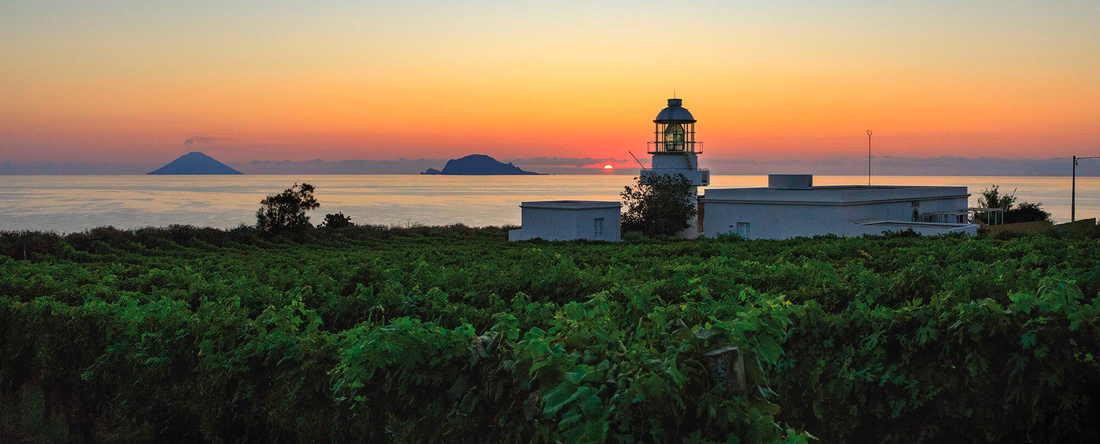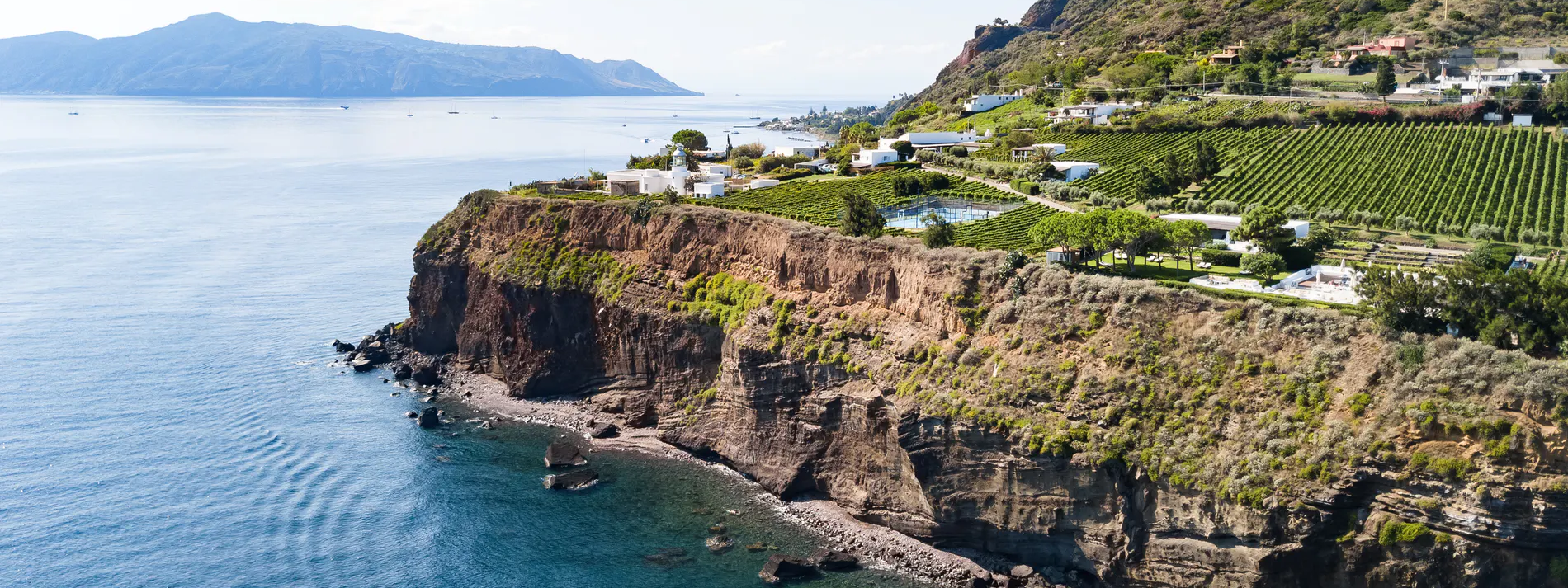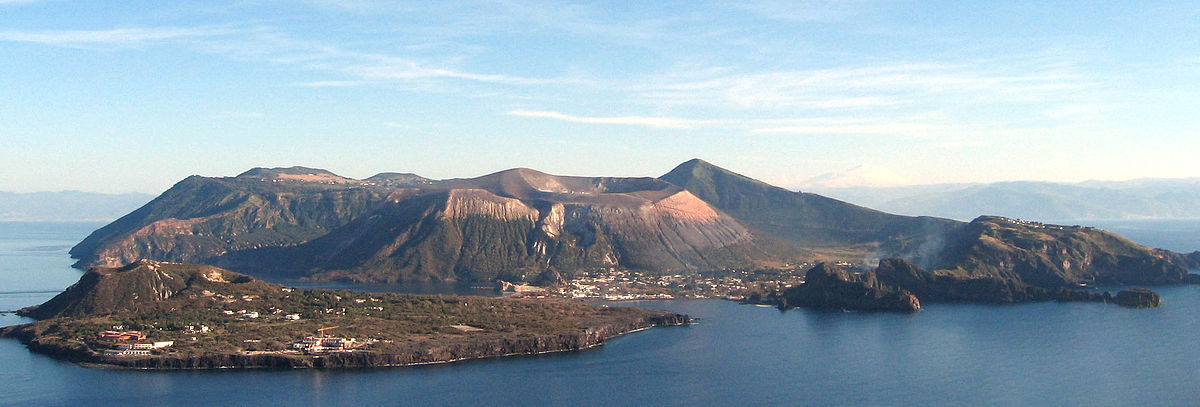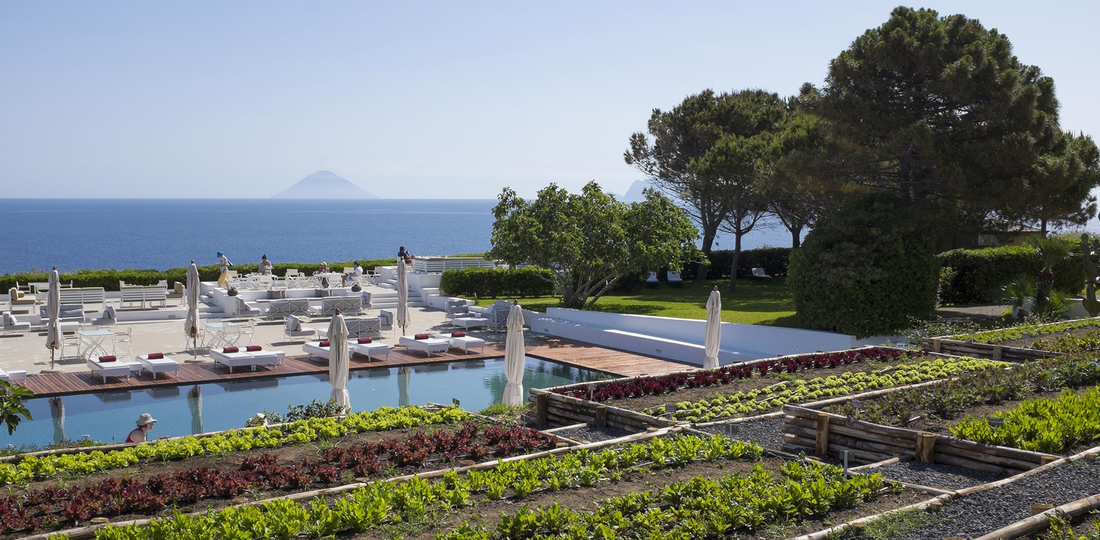Capofaro - Sicilia (Eolie Island)
For years, when sailing by the island of Salina, my wife Francesca and I have admired an extraordinary vineyard, overlooking the sea, in an area rich in history where Malvasia is the absolute protagonist.
Attracted by this extraordinary union of land and vines, in 2001 we finally managed to purchase Capofaro. The charm of a vineyard over thirty years old, illuminated by the historic lighthouse of the promontory, had won us over.
As with all our projects, we naturally started from the vineyard, studying it in detail and also measuring ourselves with the producers who had worked it (quite well) before us. A large part of the vineyard has been replanted, while the historical plant material has been retained.
Attracted by this extraordinary union of land and vines, in 2001 we finally managed to purchase Capofaro. The charm of a vineyard over thirty years old, illuminated by the historic lighthouse of the promontory, had won us over.
As with all our projects, we naturally started from the vineyard, studying it in detail and also measuring ourselves with the producers who had worked it (quite well) before us. A large part of the vineyard has been replanted, while the historical plant material has been retained.
The soils – volcanic, sandy, well-draining, with high porosity but good capability in terms of maintaining water resources – and the particular climatic dynamism generated by the proximity of the mountain to the sea, have helped us to preserve the fruit and maintain freshness and acidity in the wines.
Vigna di Paola
An island, Vulcano, to which Hephaestus, the god of fire, gave fertility and a unique microclimate. A territory, Contrada Gelso, where a Malvasia vineyard grows, 4.5 hectares with southern exposure. A soil, composed of ash and fine sand, brown in colour, but rich also in pumice, silicates and metals. A woman, Paola Lantieri, who for years cultivated this vineyard with dedication has now entrusted Tasca with the task of continuing her work with the same care and passion. Vigna di Paola is a tribute to all this.
An island, Vulcano, to which Hephaestus, the god of fire, gave fertility and a unique microclimate. A territory, Contrada Gelso, where a Malvasia vineyard grows, 4.5 hectares with southern exposure. A soil, composed of ash and fine sand, brown in colour, but rich also in pumice, silicates and metals. A woman, Paola Lantieri, who for years cultivated this vineyard with dedication has now entrusted Tasca with the task of continuing her work with the same care and passion. Vigna di Paola is a tribute to all this.
Capofaro Malvasia
Malvasia made the Tasca d’Almerita way.
From the “Anfiteatro” vineyard, 50 metres above sea level, where the soil is characterized by a loose, sandy texture originating from the degradation of ancient lava sediments. Despite its high porosity, the soil has good water retention. Limestone is absent and the reaction is sub acidic with a pH of 6.5.
The soil is generally poor in nutrients and organic matter and easily degrades due to its porous structure and the warm climate. To remedy this deficiency, leguminous green manuring is practised annually to enrich the soil with organic matter and nitrogen. There is, on the other hand, a healthy presence of micro-elements, fundamental for the quality of the grapes.
In the vineyard we try to ensure there is a large leaf area covering the bunches in order to prevent the grapes from being burned, thereby ensuring an ideal aroma. The espalier cultivation system is used in general, but in a small terrace we also find 240 plants cultivated as bushes. The new plots have intervals of 2 metres between the rows and 1 metre between the plants (5,000 plants/hectare). Guyot pruning is used, with very long shoots (12-14 buds) to favour the production of Malvasia, but also to compensate for the breakage of the shoots caused by the strong sea winds. The grapes generally ripen in the first ten days of September and slowly dehydrate, maintaining good acidity and a moderate alcohol content.
We appreciate the integrity of the fruit and rather than drying the grapes in the sun, we dry them in the shade to carry out the process of dehydration without losing the varietal notes contained in the delicate skin.
Malvasia made the Tasca d’Almerita way.
From the “Anfiteatro” vineyard, 50 metres above sea level, where the soil is characterized by a loose, sandy texture originating from the degradation of ancient lava sediments. Despite its high porosity, the soil has good water retention. Limestone is absent and the reaction is sub acidic with a pH of 6.5.
The soil is generally poor in nutrients and organic matter and easily degrades due to its porous structure and the warm climate. To remedy this deficiency, leguminous green manuring is practised annually to enrich the soil with organic matter and nitrogen. There is, on the other hand, a healthy presence of micro-elements, fundamental for the quality of the grapes.
In the vineyard we try to ensure there is a large leaf area covering the bunches in order to prevent the grapes from being burned, thereby ensuring an ideal aroma. The espalier cultivation system is used in general, but in a small terrace we also find 240 plants cultivated as bushes. The new plots have intervals of 2 metres between the rows and 1 metre between the plants (5,000 plants/hectare). Guyot pruning is used, with very long shoots (12-14 buds) to favour the production of Malvasia, but also to compensate for the breakage of the shoots caused by the strong sea winds. The grapes generally ripen in the first ten days of September and slowly dehydrate, maintaining good acidity and a moderate alcohol content.
We appreciate the integrity of the fruit and rather than drying the grapes in the sun, we dry them in the shade to carry out the process of dehydration without losing the varietal notes contained in the delicate skin.




